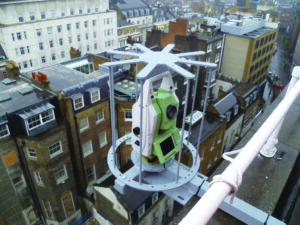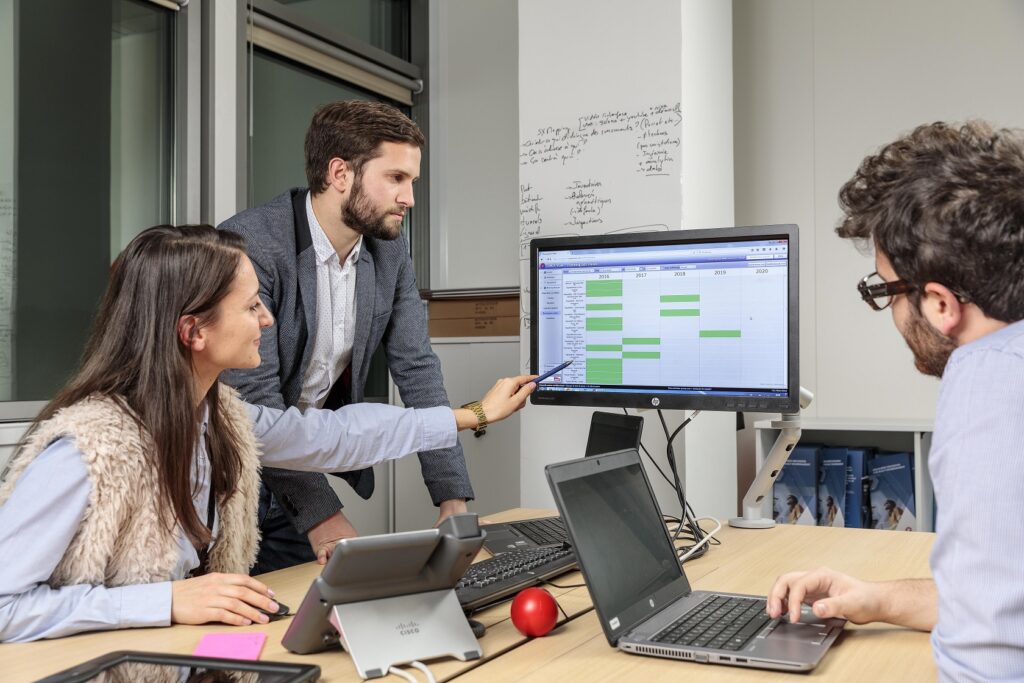Crossrail C704
Project summary
Images of the project
 Crossrail – The largest tunnelling project in Central Europe
Crossrail – The largest tunnelling project in Central Europe
Eight tunnel boring machines have weaved their way under the existing infrastructure of Central London removing 4.5 million tonnes of earth along the alignment. The project comprised 42 Km of tunnels, 10 completely new and 30 upgraded stations, making it the biggest construction project ever undertaken in UK. The dense urban environment associated with a major capital city meant that the entire route has a requirement for a comprehensive movement monitoring solution, before, during and, because of the regional geology, after construction had taken place.
Crossrail had decided that an ‘umbrella’ monitoring system, that would allow the protection of existing assets and compliance with 3rd party regulatory requirements such as Network Rail, London Underground, Docklands Light Railway and various utility providers and property owners, was required. This system would also provide supplemental information to the many main contractors working on Crossrail who were expected to undertake their own construction related monitoring to protect their site and neighbours.
The umbrella monitoring installation started in 2009 under the guise of contract C701 and consisted of traditional automatic structural and geotechnical sensors, including almost 200 Nos. automatic total stations (ATS) working in groups along the alignment and more than 16,000 monitoring prisms spread over more than 20 sites across London.
For more information on the Crossrail project please click here.
Contract Support
In September 2013, Sixense (previously Soldata) were appointed by Crossrail under contract C704 to provide its team with technical assistance and to configure and implement quality assurance controls and systematic reporting on C701 monitoring data.
A few months into the project, the scope of the work changed, and in December 2013 Sixense were instructed to maintain, manage and repair the entire monitoring system with a particular focus on the pool of ATS installations previously installed under Contract C701. Eventually, the scope grew to include the completion of the installation previously started under the C701 project and the decommissioning of the overall system as well.
Improving system performance through client partnership

From the first stages of the construction project, Crossrail had a very clear view of how they wanted to administer the C704 project as well as the objectives and the outputs required. Objectives included 100% of ATS and 98% of prism availability, while required outputs included daily and weekly dashboard reports.
From our previous experience on similar infrastructure projects in various parts of the world, including the Amsterdam Metro, Barcelona Metro and Budapest Metro, we believed that it could achieve, or at least get very close to, the delivery of those requirements and Crossrail’s expectations. It was decided to build a Crossrail Soldata integrated monitoring team with the aim that the close proximity would enable effective interaction and a quick transparent communication and information flow. This team integration, with both teams in the same office space, enabled the rapid organisation of meetings to deal with any problem affecting the monitoring system.
To deliver a robust, reliable and accurate monitoring system, a number of crucial strategies have been implemented:
- We worked in partnership with Crossrail to ensure their requirements were reflected in the ongoing management and maintenance programme for the existing instrumentation infrastructure.
- Implementation of an automated KPI tool, studying the system parameters/trends, and allowing real-time diagnosis of instrument performance.
- A proactive strategy of maintenance implemented to prioritise and redirect resources when necessary.
- Upgrading of the monitoring system by installing our Geoscope software.
Once the system had been set up, the next major task was an analysis based on the installed ATS groups, investigating the stability of the reference points and the resulting constraints to be applied. This included the strength and availability of common points to link the instruments together and produce reports proposing improvements to Crossrail with and without onsite additional installation using the skills, experience and engineering judgement of the monitoring team.
The spare capacity of the processing system enabled us to undertake simulations, to modify the instruments network geometry and systems constraints and to validate the improvements proposed before their implementation. As a result, the groups of ATSs were reshuffled, reconfigured and optimised where necessary from four to 40 ATSs to maximise the repeatability and accuracy of the monitoring system.
Board Level

To ensure optimal performance from the monitoring system a proactive maintenance board was implemented by the monitoring team using an automated key performance indicator (KPI) tool, enabling the study of the monitoring system parameters and trends to allow real time analysis of instrument operation. Potential issues could be flagged up when possible, prior to them becoming a problem by an automated alarm system.
Three levels of performance indicators were defined, from a macro to a detailed level, to overlook the monitoring system:
This included overall system performance, such as:
- Percentage of instrument working at any given point in time
- Percentage of monitoring targets seen at any point in time
- Databases performance and statistics (DB size, space, error check, duplication, active transaction, etc)
- Last data transfer from Geoscope DB to UCIMS DB
ATS group performance to define an overall proactive maintenance scheme, such as:
- Percentage of instrument working at any given point in time within a group of ATS’
- Percentage of monitoring targets seen at any point in time within a group of ATS’
- Percentage of common and reference targets seen at each calculation
- Processing performance
- Period since the last set of data were integrated in the database
- Calculation done of full quality or full availability mode.
Individual instrument performance to target reactive maintenance such as:
- Instrument power supply level
- Datalogger or piloting computer power supply level
- Percentage of monitoring targets seen at any point in time by any ATS
- Period of time since the last data received by any ATS
- Inclination and direction of inclination of any ATS
- Average duration of each cycle.
An effective maintenance regime and responsive, flexible team

The reactivity of the maintenance provided was important in order to allocate the right resource to the correct location, depending on the criticality of the construction activities of the other Crossrail contracts. In addition to the board monitoring system, a comprehensive twice daily report on the health of the monitoring system was implemented and analysed by the monitoring team.
Sixense mobilised up to 20 highly experienced and trained staff covering the project 24 hours a day, seven days a week in order to intervene on the various infrastructures, adapting the size and skills of the team to the project phases. At peak, a daytime monitoring team of six were analysing KPIs and trends, maintaining the system locally or remotely to ensure a continuous flow of data to the UCIMS database and consequently to the end users: the principal contractors of the various Crossrail construction projects.
